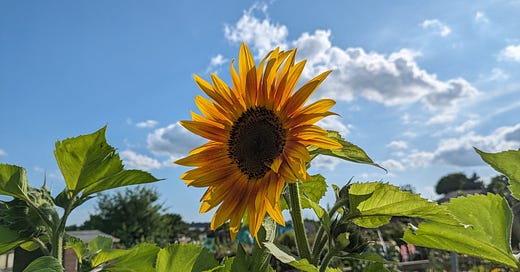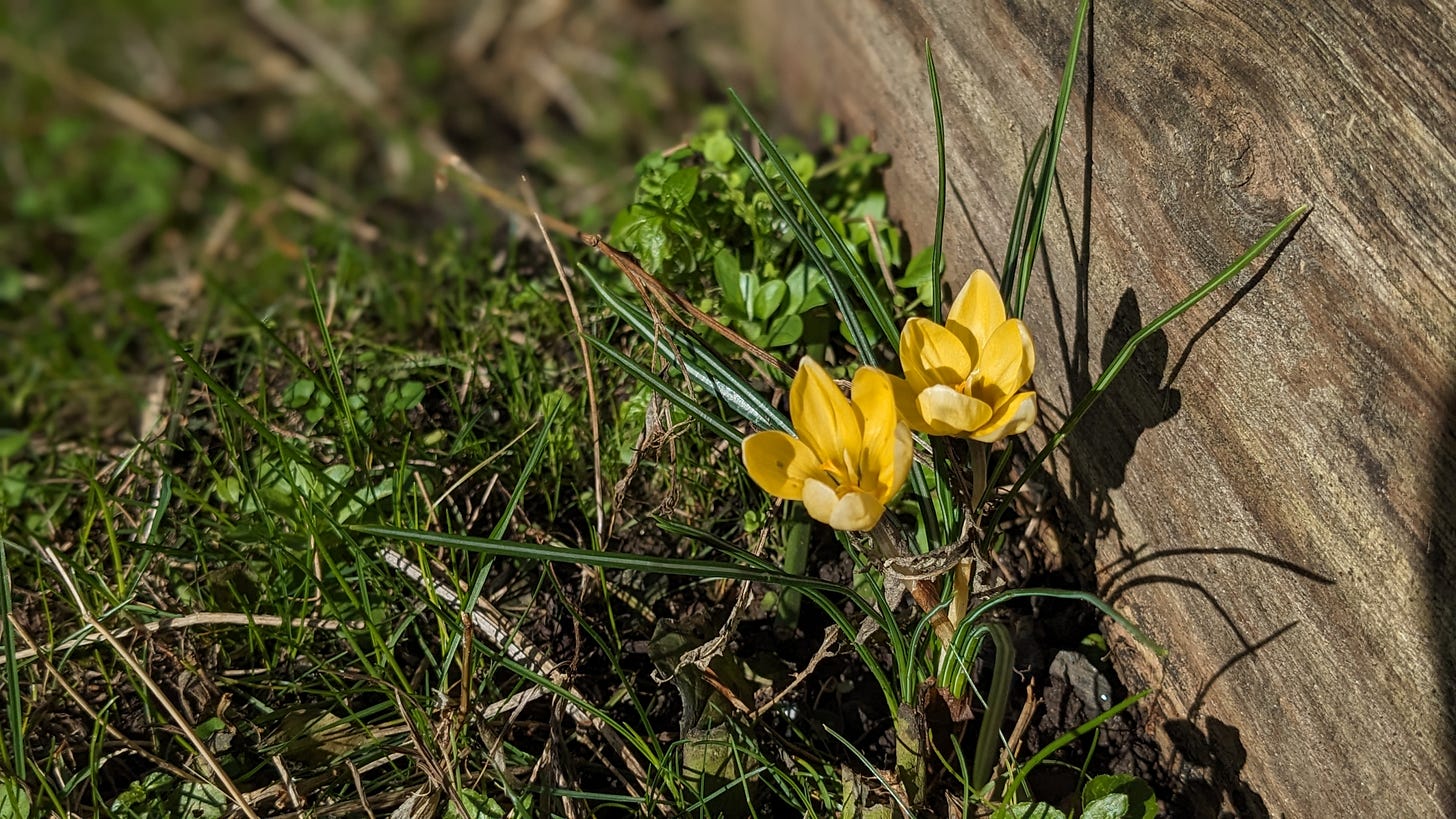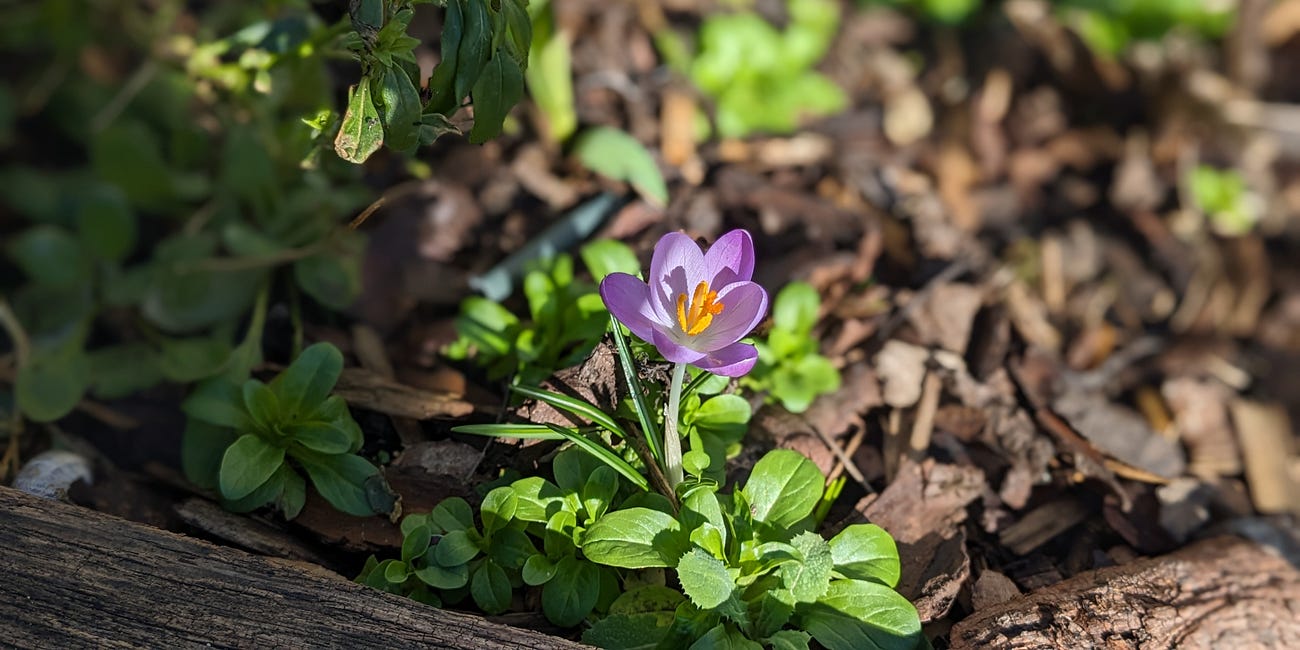On the most recent Wild South London Wild Walk we stumbled across a lovely patch of rather shy looking crocuses and us trustees fumbled over a lovely fact: crocuses only open when it’s sunny! If it’s gloomy outside, their petals will stay firmly shut. There’s a name for that… but none of us trustees could remember it at that moment. Thankfully, one of our walk attendees offered up a wonderful word: heliotrope.
This is the thing I love so much about hosting these walks - everyone has something to share, and attendees will often be more knowledgeable about a certain subject than us trustees are! I always come away learning something new.
The most famous of the heliotropes is, arguably, the aptly named sunflower! Previously I’d thought heliotropic flowers had to follow the sun throughout the day to be classified as heliotropes, but it doesn’t seem that’s technically true. Apparently it’s a misconception that sunflower heads track the Sun across the sky throughout their whole lifecycle, and they only really do this when they are in bud. When in full bloom, sunflower heads face east all day, so that they are backlit by the Sun in the afternoon. I’m looking forward to testing out this theory in the summer, when I’ll hopefully have a big patch of sunflowers at the allotment again!
Since that Wild South London walk, I’ve discovered there’s another word we could have used: nyctinastic. This is the word for the movement of leaves and flowers in the absence of light. Think of tulips that open up on a sunny day and close again at night, a prayer plant’s leaves curling back up in the evening, or, of course, a crocus hiding its pollen from the grey clouds.
I’m not going to lie, the more research I do on this, the more confused I get about the right words to use to describe crocuses, but do you know what? I’ve decided that, satisfying though they are, the words don’t actually matter that much. Had that clever walk attendee not been there to offer up the word “heliotrope,” the other people on the walk would have been just as satisfied with our crocus fact! Fancy scientific words can be helpful, but when it comes to nature connection, capturing a feeling or a moment can be more beneficial than just sharing a botanical fact.
Your task this week is to look for flowers or plants that move in response to the Sun. If there are none blooming where you live right now (or, like here, the Sun refuses to shine!), maybe you could do some further research into heliotropic or nyctinastic flowers, or draw some in your nature journal! If you have any nyctinastic houseplants, like prayer plants (Maranta leuconeura), you could keep a close eye on those too!
Sources and further reading
Seeds of doubt: mystery remains over how sunflowers track light - The Guardian
The Mystery Of Why Sunflowers Turn To Follow The Sun — Solved - NPR
opening and closing – flowers, leaves - Woodlands.co.uk
Nature Journaling Events
I’ve got two nature journaling events coming up in March (and one more in July that’s yet to be announced). Join me in Maidstone on 21st March with Kent Art Collective and Heart of Kent Walking Festival or High Elms, Bromley on 22nd March with Wild South London. We’ll be celebrating the Spring Equinox, looking for signs of spring and filling in journals and zines with our findings/feelings.
You might also like…
Crocuses: Saffron, Croydon and the Romans
This week your task is to look out for crocuses, cheering up lawns, roadsides and flower beds everywhere* and reminding us that spring is well and truly on the way.










